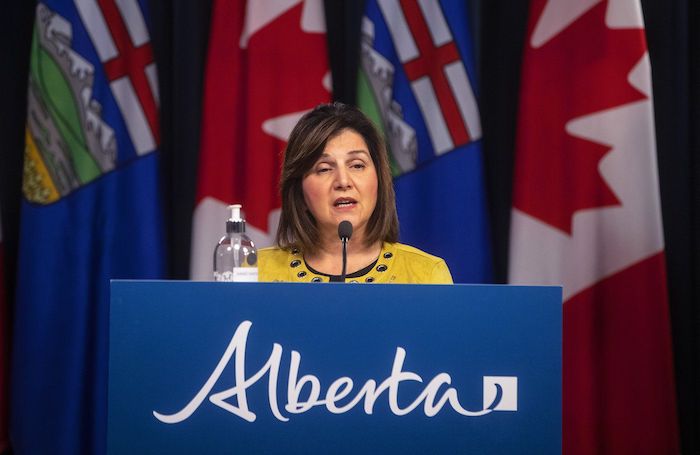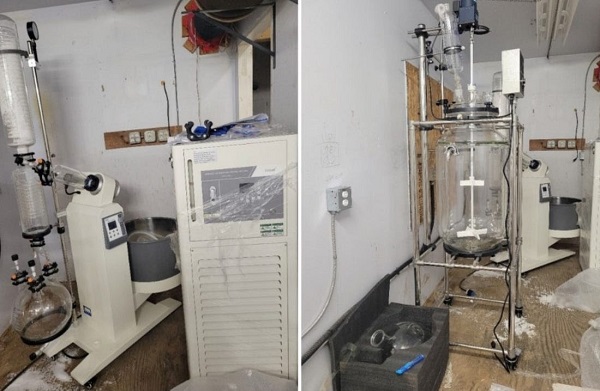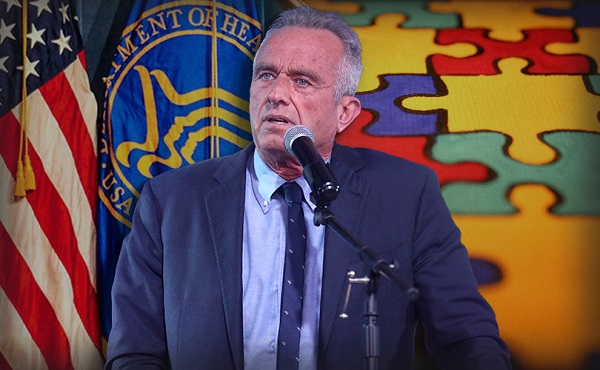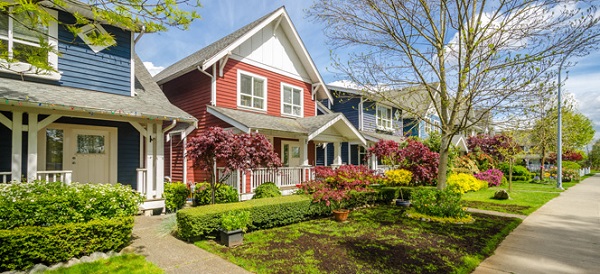Alberta
Province pumping up support for growing school enrolment

Supporting more students in classrooms
Budget 2023 provides more than $820 million over the next three years to support enrolment growth in schools.
Based on strong population growth in Alberta, a large increase in student enrolment is expected in September 2023.
“With Alberta’s rising population, we know many school authorities across the province continue to face growing enrolment pressures. Our strong funding commitment in Budget 2023 will empower school authorities to hire more teachers and obtain more resources for students.”
Over the next three years, Education’s operating expense is increasing by nearly $2 billion. This will support the hiring of approximately 3,000 education staff, including teachers, educational assistants, bus drivers and school support staff, and will help authorities manage growing class sizes.
Funding increases for enrolment will be provided to school authorities through existing grants that include enrolment components. This includes the Early Childhood Services and Grades 1-9 Base Instruction grant and the High School (Grades 10-12) Base Instruction grant, as well as grants in the services and supports category, such as Specialized Learning Support, English as an Additional Language, and Program Unit Funding. The Operations and Maintenance grant also includes an enrolment component. The flexible funding provided allows local authorities to make decisions on how to best use the funding to support their students.
The Funding Manual for School Authorities 2023/24 School Year and projected operational funding profiles are being released March 9, providing school authorities with their funding information for the coming year.
“ASBA is pleased that government has been responsive to school boards’ requests for early release of the funding manual and operational funding profiles, as it assists in informed decision-making. Government’s investment in enrolment growth is welcome news as boards address the growing, diverse and complex student needs within their divisions while remaining accountable to their communities.”
“This funding announcement is timely and much appreciated. In the 2022-23 school year, enrolment at the Calgary Board of Education has grown by more than 5,800 students and we are projecting another significant increase next year. This investment means we can hire additional teachers, educational assistants and other staff to support our growing student population.”
“As one of the fastest-growing school divisions in the province, the funds provided for enrolment growth will help Rocky View Schools hire more staff to support the 1,000 new students we will welcome in the fall. Knowing additional funding will be available is positive news, as RVS continues to experience increasing enrolment pressures across the division.”
“The CASS board of directors recognizes the importance of supporting enrolment growth while maintaining sustainable support for all boards. The early release of the funding manual will assist school authorities in initiating planning needs for the 2023-24 school year.”
“The investment in enrolment growth of Budget 2023 and other increases in grants are most welcome and will greatly help school authorities face significant challenges including high inflation and labour shortage. The association also appreciates the timeliness of the release of the funding manual and recognizes the extraordinary work of the department staff to make this possible.”
Budget 2023 secures Alberta’s future by transforming the health-care system to meet people’s needs, supporting Albertans with the high cost of living, keeping our communities safe and driving the economy with more jobs, quality education and continued diversification.
Quick facts
- Last fall, the government announced a new supplemental enrolment growth grant that provided school authorities with more than $21 million in additional funding. This grant will continue to be available in the 2023-24 school year.
- Alberta Education introduced the Supplemental Enrolment Growth (SEG) grant in the 2022-23 school year to support school authorities with significant enrolment growth.
- The SEG grant provided additional per-student funding for authority enrolment growth of more than two per cent in the 2022-23 school year. The SEG grant, in addition to weighted moving average-based allocations, will provide additional funding to school authorities that have significant growth.
- Over the next three years, the government will provide school authorities with more than $820 million in additional funding to support enrolment growth.
- In the 2020-21 school year, school boards were funded for about 730,000 students and actual attendance was 705,000.
- In the 2021-22 school year, school boards were funded for about 730,000 students and attendance was about 716,000.
- The robust financial health of school jurisdictions continues to be demonstrated by taxpayer funded reserves, reported to be $407 million as of Aug. 31, 2022.
Alberta
Alberta takes big step towards shorter wait times and higher quality health care

From the Fraser Institute
On Monday, the Smith government announced that beginning next year it will change the way it funds surgeries in Alberta. This is a big step towards unlocking the ability of Alberta’s health-care system to provide more, better and faster services for the same or possibly fewer dollars.
To understand the significance of this change, you must understand the consequences of the current (and outdated) approach.
Currently, the Alberta government pays a lump sum of money to hospitals each year. Consequently, hospitals perceive patients as a drain on their budgets. From the hospital’s perspective, there’s little financial incentive to serve more patients, operate more efficiently and provide superior quality services.
Consider what would happen if your local grocery store received a giant bag of money each year to feed people. The number of items would quickly decline to whatever was most convenient for the store to provide. (Have a favourite cereal? Too bad.) Store hours would become less convenient for customers, alongside a general decline in overall service. This type of grocery store, like an Alberta hospital, is actually financially better off (that is, it saves money) if you go elsewhere.
The Smith government plans to flip this entire system on its head, to the benefit of patients and taxpayers. Instead of handing out bags of money each year to providers, the new system—known as “activity-based funding”—will pay health-care providers for each patient they treat, based on the patient’s particular condition and important factors that may add complexity or cost to their care.
This turns patients from a drain on budgets into a source of additional revenue. The result, as has been demonstrated in other universal health-care systems worldwide, is more services delivered using existing health-care infrastructure, lower wait times, improved quality of care, improved access to medical technologies, and less waste.
In other words, Albertans will receive far better value from their health-care system, which is currently among the most expensive in the world. And relief can’t come soon enough—for example, last year in Alberta the median wait time for orthopedic surgeries including hip and knee replacements was 66.8 weeks.
The naysayers argue this approach will undermine the province’s universal system and hurt patients. But by allowing a spectrum of providers to compete for the delivery of quality care, Alberta will follow the lead of other more successful universal health-care systems in countries such as Australia, Germany, the Netherlands and Switzerland and create greater accountability for hospitals and other health-care providers. Taxpayers will get a much better picture of what they’re paying for and how much they pay.
Again, Alberta is not exploring an untested policy. Almost every other developed country with universal health care uses some form of “activity-based funding” for hospital and surgical care. And remember, we already spend more on health care than our counterparts in nearly all of these countries yet endure longer wait times and poorer access to services generally, in part because of how we pay for surgical care.
While the devil is always in the details, and while it’s still possible for the Alberta government to get this wrong, Monday’s announcement is a big step in the right direction. A funding model that puts patients first will get Albertans more of the high-quality health care they already pay for in a timelier fashion. And provide to other provinces an example of bold health-care reform.
Alberta
Alberta’s embrace of activity-based funding is great news for patients

 From the Montreal Economic Institute
From the Montreal Economic Institute
Alberta’s move to fund acute care services through activity-based funding follows best practices internationally, points out an MEI researcher following an announcement made by Premier Danielle Smith earlier today.
“For too long, the way hospitals were funded in Alberta incentivized treating fewer patients, contributing to our long wait times,” explains Krystle Wittevrongel, director of research at the MEI. “International experience has shown that, with the proper funding models in place, health systems become more efficient to the benefit of patients.”
Currently, Alberta’s hospitals are financed under a system called “global budgeting.” This involves allocating a pre-set amount of funding to pay for a specific number of services based on previous years’ budgets.
Under the government’s newly proposed funding system, hospitals receive a fixed payment for each treatment delivered.
An Economic Note published by the MEI last year showed that Quebec’s gradual adoption of activity-based funding led to higher productivity and lower costs in the province’s health system.
Notably, the province observed that the per-procedure cost of MRIs fell by four per cent as the number of procedures performed increased by 22 per cent.
In the radiology and oncology sector, it observed productivity increases of 26 per cent while procedure costs decreased by seven per cent.
“Being able to perform more surgeries, at lower costs, and within shorter timelines is exactly what Alberta’s patients need, and Premier Smith understands that,” continued Mrs. Wittevrongel. “Today’s announcement is a good first step, and we look forward to seeing a successful roll-out once appropriate funding levels per procedure are set.”
The governments expects to roll-out this new funding model for select procedures starting in 2026.
* * *
The MEI is an independent public policy think tank with offices in Montreal, Ottawa, and Calgary. Through its publications, media appearances, and advisory services to policymakers, the MEI stimulates public policy debate and reforms based on sound economics and entrepreneurship.
-

 2025 Federal Election2 days ago
2025 Federal Election2 days agoCarney needs to cancel gun ban and buyback
-

 2025 Federal Election2 days ago
2025 Federal Election2 days agoResearchers Link China’s Intelligence and Elite Influence Arms to B.C. Government, Liberal Party, and Trudeau-Appointed Senator
-

 COVID-191 day ago
COVID-191 day agoCDC Vaccine Safety Director May Have Destroyed Records, Says Sen. Ron Johnson
-

 Business1 day ago
Business1 day agoCanadian Police Raid Sophisticated Vancouver Fentanyl Labs, But Insist Millions of Pills Not Destined for U.S.
-

 2025 Federal Election18 hours ago
2025 Federal Election18 hours ago‘Sadistic’ Canadian murderer claiming to be woman denied transfer to female prison
-

 COVID-192 days ago
COVID-192 days agoFauci, top COVID officials have criminal referral requests filed against them in 7 states
-

 Health15 hours ago
Health15 hours agoRFK Jr. promises to identify cause of autism ‘epidemic’ by September
-

 2025 Federal Election15 hours ago
2025 Federal Election15 hours agoTaxpayers urge federal party leaders to drop home sale reporting to CRA










